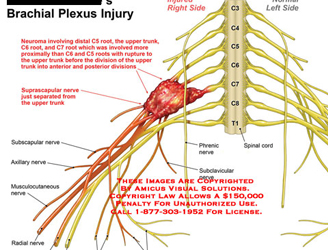
Brachial Plexus Injury
At onset of injury, nonsteroidal anti-inflammatory drugs (NSAIDs), early mobilization, and moist heat packs are the favorable methods of treatment for acute injuries. In the subacute phase, a gradual progression from ROM activity to cervical and shoulder muscle strengthening is recommended.
If symptoms persist (eg, persistent weakness, chronic neurapraxia) regardless of therapy, further consideration for additional imaging and referral should be undertaken.
Surgical intervention is rarely needed, is injury-specific, and should be directed by a neurosurgical or orthopedic spine surgeon.
Neurosurgery spine/orthopedic spine
Manipulation is not recommended as a first line intervention, but it may be a helpful adjunct after full medical assessment has been completed.
WE TREAT FOR
- Osteo Arthritis (Knee Pain)
- Peri Arthritis (Shoulder Pain)
- Rheumatoid Arthritis
- Spondylitis (Neck Pain)
- Sciatica (Back Pain)
- Fracture Rehabilitation
- Muscle & Joint Pains
- Spinal Disc Problems
- Hemiplegia (Paralysis)
- Paraplegia
- Quadriplegia
- G.B. Syndrome
- Brachial Plexus Injury
- Wrist drop & Foot drop
- Club Foot
- Ligament Injuries
- Tennis elbow
- Golfers Elbow
- Toritcollis
- Plantar Fasciitis (Heel Pain)
- Hip & Knee replacement Rehabilitation
- Ankylosing Spondylitis
- Bells Palsy
- Brusitis
- Achilles Tendonitis
- Carpal Tunnel Syndrome
- Piriformis Syndrome
- Tenosynovitis
- Fibromyalgia
- Prenatal & Post Natal Training
- Cupping Therapy
- Unweighing System
- Latest Laser therapy Equipment
- TENS
- Spinal Traction
- Continuous Passive Movement(C.P.M)
- Interferential Therapy(IFT)
- Hydrocollator Therapy
- Ultra Sound Therapy
- Muscle Stimulator